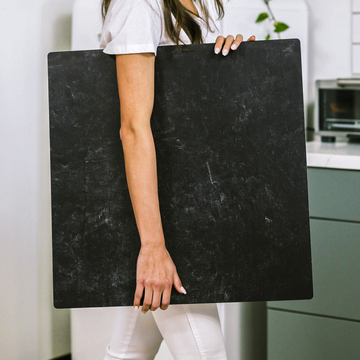Marble backgrounds might seem like a staple in modern photography, but there's far more to them than meets the eye. While they're often chosen for their elegance and timelessness, marble surfaces can completely transform an image-if you know how to use them to their fullest potential. Let’s pull back the curtain on what makes marble truly extraordinary as a photographic backdrop.
How Light Dances Across Marble
Lighting makes or breaks any photograph, and marble has its own unique way of playing along. Unlike paper or vinyl, marble delivers a remarkable interplay between specular and diffuse reflection. Here’s why that matters:
- Specular Reflection: A polished marble sheet can act like a subtle mirror, creating intriguing highlights and lively reflections. This is most pronounced with tight, focused lighting angles or when you bring a small, bright light source into play.
- Diffuse Reflection: The stone’s natural veining and granular surface also scatter light, providing a welcoming glow that feels organic and upscale.
- Subsurface Scattering: Unlike printed surfaces, authentic marble (and some high-end faux versions) lets a bit of light slip beneath the surface, giving your photos a gently luminous depth that’s tough to fake.
Getting the best from marble often comes down to lighting choices. A diffuser or a softbox-placed just out of frame-can soften harsh glares and draw out that natural, expensive “glow.”
Veins as a Silent Compositional Guide
Most photographers see those iconic veining patterns as decoration, but there’s a deeper tactical advantage here. Marble’s veins can subtly direct a viewer’s attention across your frame:
- Guide the Eye: Position key products where the most eye-catching veins converge or curve-using design that naturally pulls the eye, just like leading lines in landscape shots.
- Break Up Flatness: Diagonal veins lend energy and direction, adding subtle drama to even the flattest layflat compositions.
For those who like to get up close, the microscopic pits and fine textures of marble make macro photography a delight. These tiny details add richness, especially if you’re shooting jewelry, food, or anything needing an extra tactile touch.
The Surprising Science of Marble’s Color
It’s a common misconception that white marble means color neutrality in your shots. In practice, marble often runs cool-inflected with subtle blue or green undertones that can influence how your products or food read in-camera. For creators, this is a double-edged sword:
- Want to make gold jewelry or warm-toned products pop? A cool marble surface is your secret weapon.
- Shooting food or skin tones? Custom white balancing on your exact marble backdrop is essential to keep those hues glowing and true-to-life.
Dialing in color accuracy isn’t just technical-it’s a real advantage for brands that want to build trust through beautiful, truthful visuals.
Real vs. Faux: More Than Meets the Eye
Choosing between genuine and engineered marble is about more than just looks. Here’s what sets quality faux marble apart:
- Stain Resistance: Real marble is famously fussy-prone to stains, etching, and fingerprints. Faux marble (like what Replica Surfaces offers) sidesteps those headaches, giving you pro looks with zero post-shoot clean-up stress.
- Lightweight Versatility: While real marble slabs have gravitas, they’re heavy and unwieldy. Modern replica boards let you try more angles, set up infinity backdrops, and experiment freely-just prop, stack, or combine with other surfaces for an instantly professional set-up.
In short, quality faux marble offers both realism and flexibility for the studio or home-based creator.
Creative Techniques: What Sets Your Marble Shots Apart
If you want to create something truly out of the ordinary, try these pro-level tricks:
- Layered Lighting: Suspend a frosted acrylic sheet slightly above your marble surface and back- or side-light it. The result? Intricate, organic shadow play and dimensional highlights that’ll make your images impossible to scroll past.
- Hybrid Surfaces: Introduce elements like natural wood, fabric, or real stone fragments alongside faux marble. The interplay between different textures and patterns can add storytelling and drama-making every image a fresh scene.
- Add Real Texture: For extreme close-ups, scatter a touch of real marble dust or chips on your board, then use raking light. You’ll introduce a glint and detail that feels almost cinematic.
These under-the-radar techniques turn a standard background into something that’s unmistakably yours-and uniquely memorable.
In Closing: Master the Surface for Maximum Impact
At the end of the day, marble is more than a visual trend. When you understand its lighting quirks, use veining for composition, and explore both real and hybrid techniques, you unlock imagery that’s deeper, sharper, and more professional than any “just throw it on marble” Instagram trend. Your products and brand deserve that level of intention.
Curious to see these concepts in practice? Looking for a step-by-step lighting demonstration or inspiration for your next shoot? Reach out or leave a comment below-let’s push the boundaries of what’s possible together!



